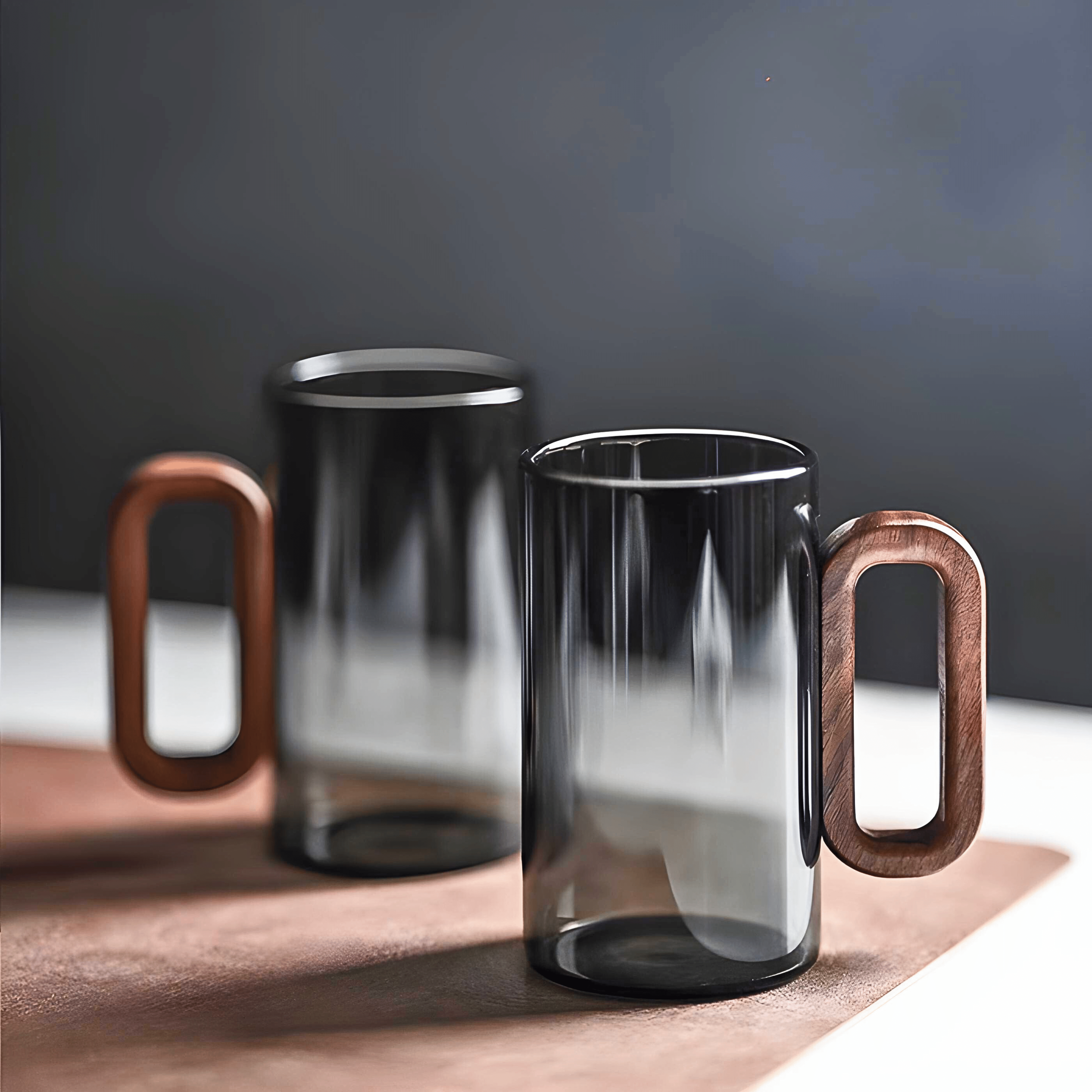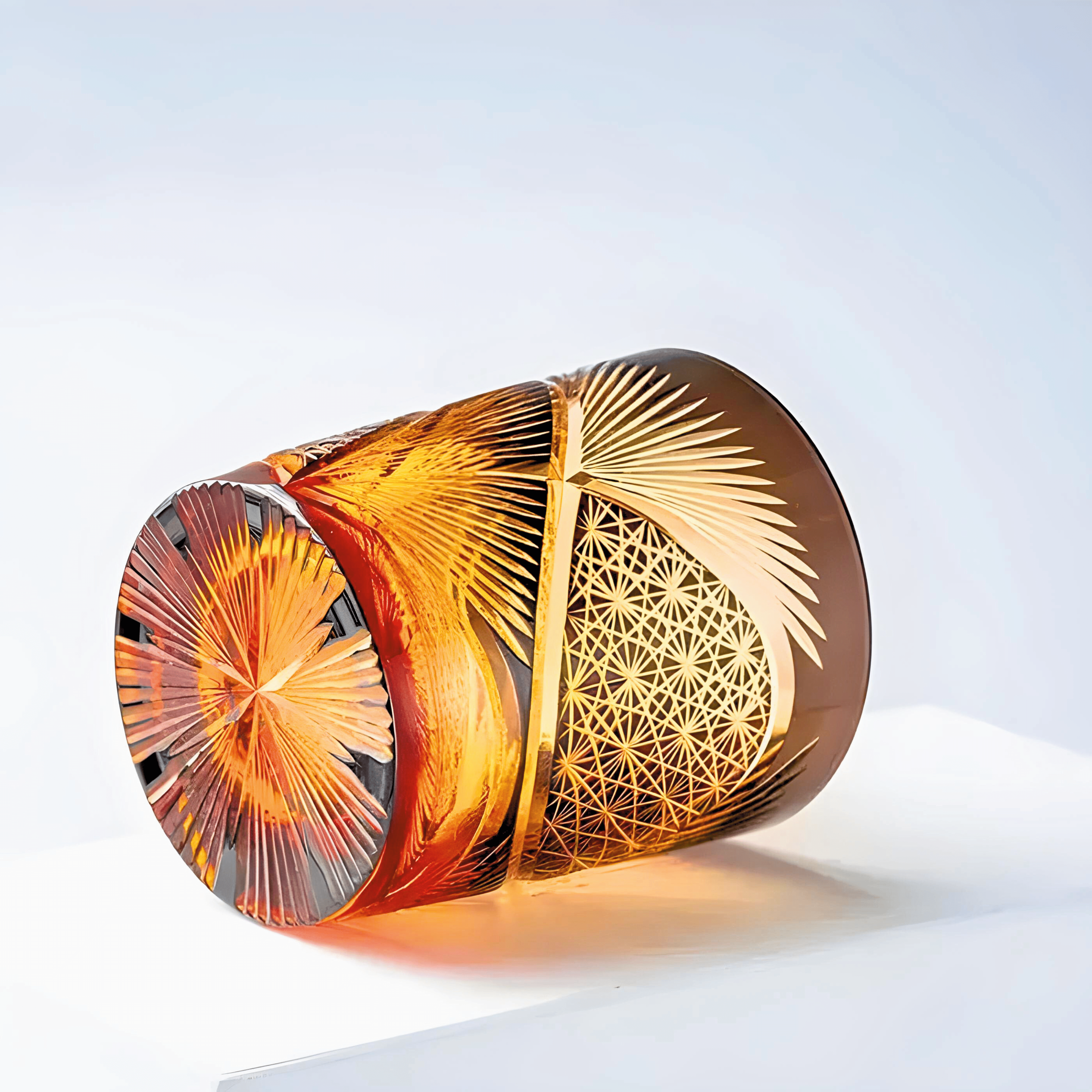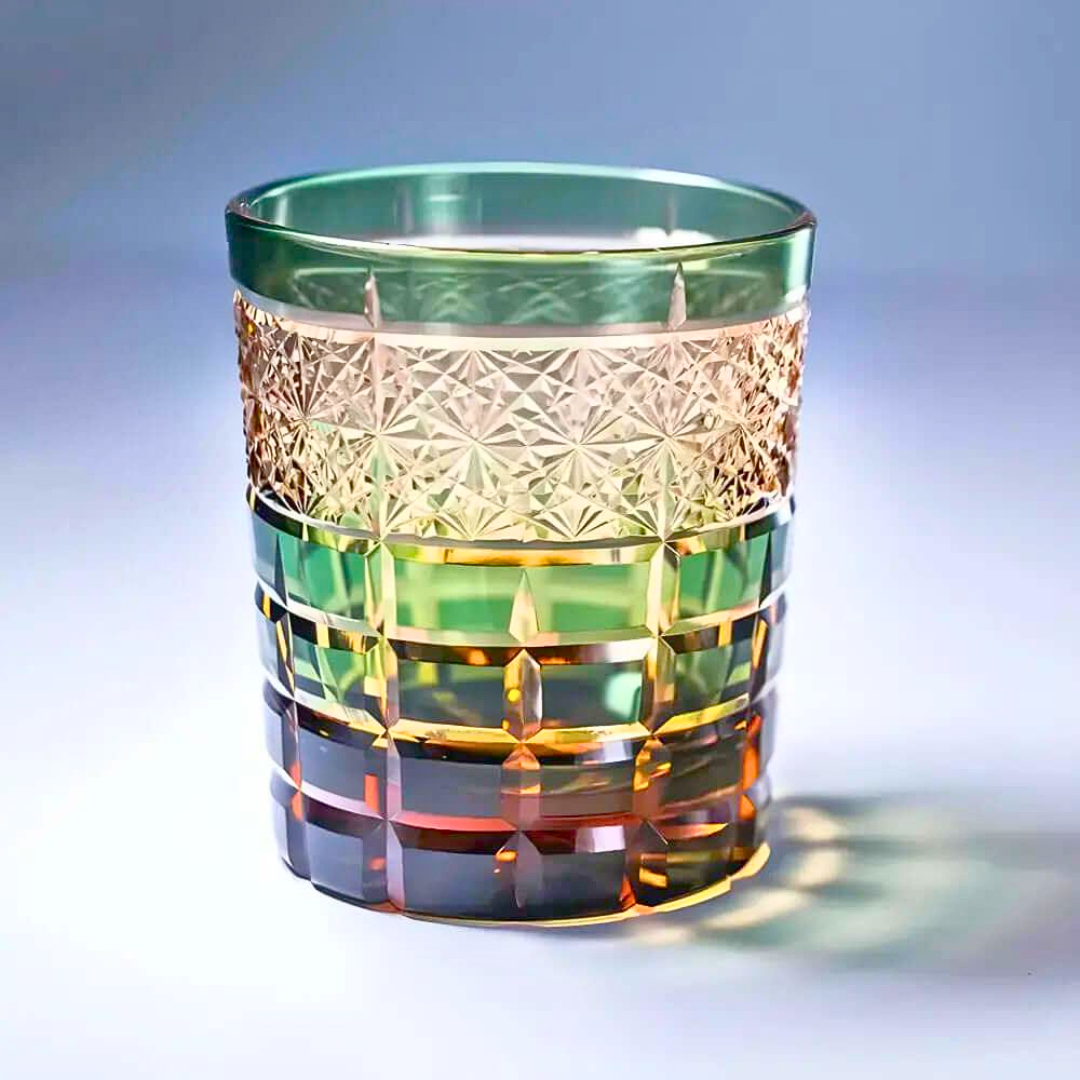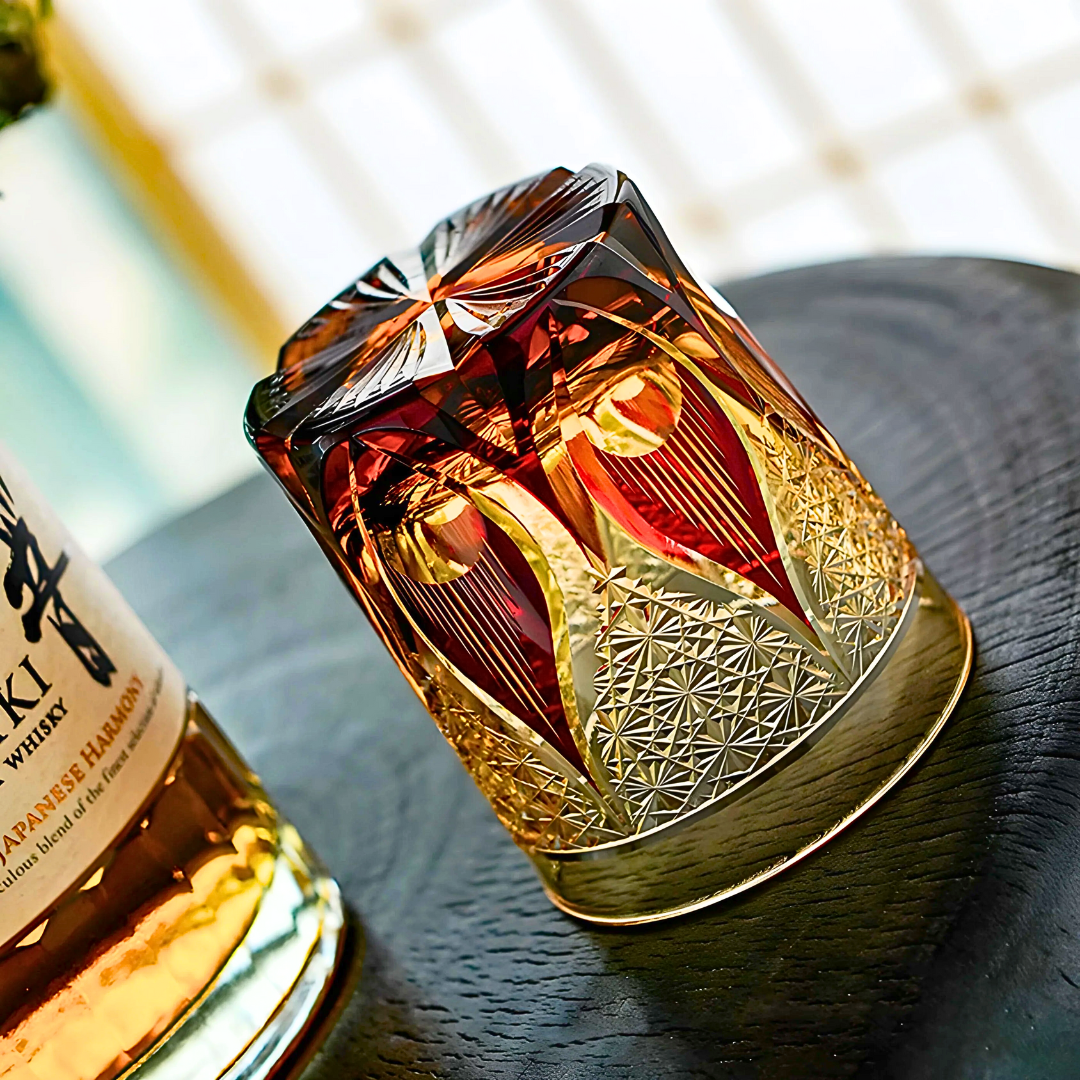Many people have different preferences when it comes to coffee. Knowing about coffee cup sizes is key. These sizes can change a lot, based on where you get your coffee and what kind it is.
One common size is the small cup, also called a "shot" or "single." It holds about 1 ounce (30 milliliters) of liquid. This size is perfect for an espresso shot, loved by many coffee lovers.
The "regular" or "medium" cup is the next size up. It holds around 8 ounces (240 milliliters) of coffee. This is the usual size in many coffee shops. It's great for a moderate caffeine boost at the start or middle of the day.
If you want more coffee, try the "large" cup. It can hold 12 to 16 ounces (350 to 470 milliliters) of coffee. This size gives you a lot of caffeine to keep you going all day.
Some places also have an extra-large or "venti" size. This can hold up to 20 ounces (590 milliliters) or more. It's ideal for those who need a big caffeine kick or just love big coffee drinks.
Next, we'll explore the different coffee cup sizes in more detail. Join us as we dive deeper into the world of coffee cup sizes!
In This Article
Standard Coffee Cup Sizes
Coffee cups come in various sizes, catering to different preferences and needs. Here are the common standard coffee cup sizes you may come across:
Espresso Cup (2-3 ounces): Typically used for serving a single shot of espresso, these small cups are perfect for those who prefer a concentrated burst of flavor and a quick caffeine boost.
Demitasse Cup (3-4 ounces): Similar in size to the espresso cup, demitasse cups are often used for serving small portions of strong coffee or espresso-based beverages like macchiatos or cortados.
Small Cup (8-9 ounces): This popular size is commonly used for drip coffee in cafes and restaurants. It provides a moderate amount of coffee without overwhelming the drinker.
Medium Cup (12-16 ounces): Also known as the "regular" size, the medium cup is widely used for everyday coffee consumption. It offers a generous portion of coffee without being too large.
Large Cup (20 ounces or more): Ideal for those who desire an extra kick of caffeine or need a substantial amount of coffee to start their day, large cups are often seen in coffee shops and fast-food chains.
Travel Mug (12-20 ounces): Designed for on-the-go coffee lovers, these mugs are typically larger and feature insulation to keep the beverage hot for extended periods. They come in various sizes to suit individual preferences.
Similar Articles
Common Terminology Used in Coffee Cup Sizes

Ordering coffee can be easier if you know the different cup sizes and their names. Knowing the jargon used in coffee shops helps avoid confusion. Here's a guide to common coffee cup sizes:
Espresso Shot: This refers to a concentrated shot of coffee served in a small cup, usually about 1 to 2 ounces in size. Espresso shots form the foundation of many coffee beverages and provide a strong flavor profile.
Macchiato: A macchiato is an espresso shot "marked" with a small amount of steamed milk, creating a bolder and slightly less intense flavor compared to a straight espresso shot.
Cappuccino: Cappuccino is a classic Italian coffee beverage typically made with equal parts espresso, steamed milk, and a layer of foamed milk on top. It is usually served in a 6-ounce cup and is known for its creamy texture.
Latte: A latte consists of a shot of espresso combined with steamed milk, resulting in a milder and creamier flavor compared to a cappuccino. It is typically served in an 8-ounce cup.
Flat White: The flat white originated in Australia and New Zealand and is made with a double shot of espresso and steamed milk, with little to no foam on top. It is usually served in a 6-ounce cup and provides a rich and velvety texture.
Americano: An Americano is made by diluting an espresso shot with hot water, resulting in a milder coffee flavor. It is served in various sizes ranging from 8 to 16 ounces.
Mocha: A mocha is a combination of espresso, steamed milk, and chocolate. It can be served in different sizes and is often topped with whipped cream and chocolate drizzle.
Breve: A breve is similar to a cappuccino or latte but is made with half-and-half instead of milk. It provides a richer and creamier taste.
Soy or Almond Milk: These terms refer to alternatives to dairy milk that can be requested in place of regular milk in any coffee beverage. They are popular among individuals with dietary restrictions or those looking for a non-dairy option.
Small, Medium, Large: These are the standard size categories used by most coffee shops, with specific measurements varying between establishments. Small is typically around 8 ounces, medium around 12 ounces, and large around 16 ounces.
Shop With Us
Factors to Consider When Choosing Coffee Cup Sizes
1. Serving Size Preferences
When picking coffee cup sizes, think about what your customers like. People drink coffee in different ways. Some like a small espresso, while others prefer a bigger cup to enjoy all day.
Knowing what your customers want can guide you. This helps decide the sizes you should have.
2. Specialty Coffee Options
If a coffee shop has many specialty coffee drinks, think about the cup sizes. Drinks like lattes or cappuccinos need bigger cups. This is because they have more milk or foam.
Having different cup sizes can make these drinks look and taste better. It's a small detail that can make a big difference.
3. Portability and On-the-Go Consumption
Many coffee lovers are always on the move. They often prefer to take their coffee with them. When picking a coffee cup size, think about how portable it is.
A smaller cup is great for a quick energy boost. It's perfect for those rushing to work or other activities. On the other hand, a larger cup is ideal for a drink that lasts longer. It's great for enjoying during your commute.
4. Cost and Profitability
Another important factor to consider is the cost and profitability associated with different cup sizes. Larger cups typically require more coffee and other ingredients, which can increase the cost of each serving.
Balancing the cost and profitability of different cup sizes is crucial for coffee shop owners to ensure they are offering options that meet customer demand while also maintaining a profitable business.
5. Environmental Impact
Nowadays, we all want to be kinder to the planet. So, it's smart to think about the environmental impact of our coffee cups. Choosing reusable or compostable cups for bigger sizes can cut down on waste. Some folks might even pick smaller cups to help the environment more.
When picking coffee cup sizes, think about what your customers like. You want to offer choices that fit their needs and your coffee shop's vibe. It's all about finding a sweet spot between making customers happy, keeping your business running smoothly, and being eco-friendly.
Understanding Espresso Cup Sizes
Espresso is loved for its bold and rich taste. But, knowing the different sizes can be tricky. This guide will help you pick the right cup for your espresso.
Traditional Espresso Cup Sizes
Traditionally, espresso cups come in three popular sizes: demitasse, the shot, and lungo. Each size caters to different preferences and brewing techniques.
Demitasse: This is the smallest espresso cup size, typically holding between 2 to 3 ounces (approximately 60 to 90 milliliters) of liquid. Demitasse cups are commonly used for serving traditional espresso shots. The small size helps to concentrate the aroma and flavors of the espresso, providing an intense and enjoyable drinking experience.
Shot: The shot size espresso cup is slightly larger than the demitasse. It can hold between 3 to 4 ounces (approximately 90 to 120 milliliters) of espresso. This cup size is often used for traditional espresso shots and allows for a slightly longer extraction time, resulting in a more balanced flavor profile.
Lungo: The lungo cup size is the largest among the traditional espresso cups, typically holding between 4 to 6 ounces (approximately 120 to 180 milliliters) of liquid. Lungo is an Italian term for "long," and this size refers to an espresso shot extracted with a longer brewing time. The larger cup size accommodates the additional brewing time, resulting in a milder flavor and a larger serving of coffee.
Contemporary Espresso Cup Sizes
In recent years, coffee shops have grown and new brewing methods have emerged. This has led to a variety of espresso cup sizes. Here are some you might see:
Macchiato: A macchiato cup is slightly smaller than a demitasse cup, typically holding around 1.5 to 2 ounces (approximately 45 to 60 milliliters) of espresso. It is often used for serving macchiatos, where a small amount of milk or foam is added to the espresso.
Cappuccino: Cappuccino cups are larger than traditional espresso cups and can hold between 6 to 8 ounces (approximately 180 to 240 milliliters) of liquid. These cups are commonly used for serving cappuccinos, which include equal parts espresso, steamed milk, and milk foam.
Latte: Latte cups are the largest among espresso cups and can hold between 8 to 12 ounces (approximately 240 to 360 milliliters) of liquid. These cups are designed for serving lattes, which contain a double shot of espresso and a generous amount of steamed milk.
Analyzing Small, Medium, and Large Coffee Cup Sizes
Coffee lovers often have different preferences when it comes to the size of their coffee cup. Whether you like a small, medium, or large coffee, it's important to understand the different cup sizes. This can affect your overall coffee experience.
In this section, we will analyze small, medium, and large coffee cup sizes. We will explore their characteristics, benefits, and considerations. This will help you choose the right size for your coffee needs.
1. Small Coffee Cup Size
Small coffee cups typically range from 8 to 12 ounces. These cups are perfect for those who prefer a smaller, more concentrated dose of caffeine or for those who like to savor their coffee slowly. Here are some key points to consider about small coffee cups:
Intense flavor: A small cup size allows for a more concentrated flavor in each sip. The flavors are often more pronounced, making it an ideal choice for enjoying high-quality coffees.
Portability: Small coffee cups are usually lightweight and easy to carry, making them a convenient option for people who are often on the go.
Temperature control: Since the liquid volume is small, the coffee in a small cup tends to cool down quickly. This can be both an advantage, as it allows for quicker consumption, or a disadvantage, if you prefer your coffee to stay hot for longer periods.
2. Medium Coffee Cup Size
Medium coffee cups typically range from 12 to 16 ounces. They strike a balance between a modest serving size and a satisfying amount of coffee. Let's delve into the characteristics of medium coffee cups:
Versatility: Medium-sized cups are popular as they can accommodate various coffee drinks, such as lattes, cappuccinos, and iced coffees, without being too constraining in terms of volume.
Milder taste: With a slightly larger size, medium cups can offer a more balanced flavor profile, diluting stronger notes while still giving room for the coffee's natural nuances to shine.
Longer enjoyment: Since medium cups hold more coffee than their smaller counterparts, they provide a longer-lasting and enjoyable coffee experience without the need for frequent refills.
3. Large Coffee Cup Size
Large coffee cups typically range from 16 to 20 ounces, or even more. They are the go-to choice for those seeking a generous serving of caffeine. Understanding the features of large coffee cups is important:
Abundance: Large cups offer a substantial amount of coffee, making them perfect for caffeine enthusiasts who require a significant intake or desire a longer-lasting drink.
Variety of styles: Large cups can accommodate a wide range of coffee-based creations, including specialty beverages like macchiatos or frappuccinos, providing ample space for additional ingredients and toppings.
Temperature retention: On the downside, larger coffee cups generally have more surface area, which can result in a faster cooling rate. It's important to consider using a thermal cup or consuming the beverage promptly to maintain optimal warmth.
Choosing the Right Coffee Cup Size for Different Types of Coffee
Coffee comes in many sizes and brewing methods. Each has its own flavors and characteristics. To enjoy your favorite coffee, choose the right cup size for it.
Here are some guidelines for picking the perfect coffee cup size. This depends on the type of coffee you're drinking.
Espresso: Espresso is a concentrated form of coffee that is served in small, concentrated shots. To fully appreciate its bold and intense flavors, espresso is typically served in a small espresso cup, which has a capacity of 1-2 ounces. These cups are designed to preserve the crema and aromas of the espresso.
Cappuccino and Latte: Cappuccinos and lattes are popular milk-based coffee beverages that require a larger cup to accommodate the addition of steamed milk. A standard cappuccino is typically served in a 6-ounce cup, while a latte is usually served in an 8-ounce cup. These sizes allow for the perfect balance of espresso and milk, ensuring a harmonious taste experience.
Americano: An Americano is made by adding hot water to a shot of espresso. To maintain the unique flavors and characteristics of an Americano, it is best served in a larger cup. A 12-ounce cup is a common choice for Americano lovers, as it allows for the addition of water without diluting the taste of the espresso.
Drip Coffee: Drip coffee, also known as filter coffee, is brewed using a drip coffee maker or a pour-over method. It is often served in larger cups to accommodate the larger serving size. A typical cup size for drip coffee ranges from 10 to 16 ounces, allowing coffee enthusiasts to savor the flavors and enjoy a more substantial volume of coffee.
Mocha and Flavored Coffees: Mochas and flavored coffees, such as vanilla or caramel, often incorporate additional ingredients like chocolate or syrups. These flavor additions can enhance the taste and sweetness of the coffee. When indulging in mochas or flavored coffees, it is best to opt for a larger cup size, such as 12 to 16 ounces, to fully appreciate the added flavors.
The Importance of Coffee Cup Sizes in the Coffee Industry
Coffee cup sizes may seem like a minor detail, but they play a significant role in the coffee industry. From cafe owners to baristas and even coffee enthusiasts, understanding the importance of cup sizes is essential for various reasons.
1. Consistency in Serving Sizes
One of the primary reasons why coffee cup sizes matter is to ensure consistency in serving sizes. Customers often have certain expectations when it comes to the amount of coffee they receive in a cup. Establishing standardized cup sizes helps to provide a consistent experience for customers across different cafes and coffee shops.
2. Profitability for Cafes
Cafe owners also consider coffee cup sizes for reasons related to profitability. By offering different cup sizes, cafes have the flexibility to offer various price points for their coffee. This allows them to cater to different customer preferences and maximize their revenue potential.
3. Portion Control
Coffee cup sizes serve as a means of portion control. Baristas need to ensure that they are using the correct amount of coffee grounds for each cup size to achieve a balanced flavor. Using the appropriate cup size allows for consistent brewing ratios and prevents over or under-extraction of the coffee, resulting in a more enjoyable cup.
4. Customer Satisfaction
Choosing the right cup size can also impact customer satisfaction. Some customers prefer smaller cup sizes for a quick espresso shot, while others enjoy larger sizes for a leisurely coffee experience. By offering a range of cup sizes, cafes can cater to the diverse preferences of their customer base, ensuring a positive overall experience.
5. Environmental Considerations
In recent years, there has been a growing focus on sustainability and reducing waste in the coffee industry. Coffee cup sizes can play a role in these efforts. By offering smaller cup sizes or encouraging the use of reusable cups, cafes can help minimize the environmental impact of single-use paper cups.
6. Brand Differentiation
Cup sizes can also contribute to a cafe's branding and unique identity. Offering unique or unconventional cup sizes can help a cafe stand out in a competitive market. It allows cafes to differentiate themselves from larger chains and create a memorable experience for customers.
Overall, coffee cup sizes hold significant importance in the coffee industry. They help ensure consistency, profitability, portion control, and customer satisfaction. Additionally, they can contribute to sustainability efforts and brand differentiation. By understanding the role of cup sizes, both cafe owners and coffee enthusiasts can make well-informed choices that benefit the entire industry.
How to Properly Measure Coffee Cup Sizes
Measuring coffee cup sizes accurately is key for baristas and coffee lovers. It helps brew the perfect cup of coffee. Knowing the different sizes and capacities of coffee cups is crucial. This ensures consistent brewing and serving sizes.
Here are some tips for measuring coffee cup sizes correctly:
Use a measuring cup: To accurately measure the volume of a coffee cup, it's best to use a measuring cup with clear markings. Pour water into the cup, ensuring it reaches the brim without overflowing. Read the measurement on the cup to determine its capacity. Remember that coffee cups are measured in fluid ounces (oz) or milliliters (ml).
Consider the standard sizes: Coffee cups usually range in size from 8 to 20 ounces (240 to 590 ml). The most commonly found sizes in cafes and households are 8 oz (240 ml), 12 oz (355 ml), and 16 oz (473 ml). These sizes are considered standard and provide a good starting point for measuring coffee cup capacities.
Account for the rim capacity: When measuring a coffee cup, consider its rim capacity. Some cups have a large rim, which means they can hold more liquid than their stated capacity. This can affect the accuracy of your measurements. Take note of the maximum capacity of the cup and ensure you pour the coffee up to that point.
Be aware of variance among cups: It's important to recognize that coffee cups can vary in size and shape across different brands and styles. Some cups may have a wider base or taller height, affecting their capacity. Pay attention to the specific cup you are using and measure its capacity individually.
Use a scale for precision: If you're aiming for precise measurements, using a kitchen scale can be helpful. Place the empty cup on the scale and note its weight. Then fill the cup with water and measure the weight again. The difference between the two weights will give you the weight of the liquid, which can be converted to volume measurements.
Conclusion
To sum it all up, knowing coffee cup sizes is key for coffee fans or those who often visit coffee shops. It helps you order the right amount of coffee that fits your taste and needs. Here are the main points to keep in mind:
Different coffee shops may have their own unique cup size names, so it helps to familiarize yourself with the terminology used in the specific establishment you visit.
Keep in mind that cup sizes can vary between countries and regions. If you are traveling or ordering coffee internationally, make sure to inquire about the local coffee cup sizes to avoid any confusion.
The standard cup sizes are typically small (8 ounces), medium (12 ounces), and large (16 ounces). However, some coffee shops offer additional sizes such as extra-small or extra-large.
It's important to consider your caffeine tolerance and personal preference when selecting a cup size. If you prefer smaller, concentrated doses of caffeine, opt for a smaller cup size. If you enjoy sipping on a larger beverage for a longer period, go for a larger size.
Remember that the actual beverage volume in a cup may not always match the cup size indicated. Factors like ice, milk, foam, and other additives can affect the amount of actual coffee you will receive.
If you're unsure about the size, don't hesitate to ask the barista for clarification. They are there to help you and provide guidance on choosing the right cup size for your needs.
Lastly, don't be afraid to experiment and try different cup sizes. Coffee enjoyment is a personal experience, and finding the perfect cup size for yourself can enhance your overall coffee-drinking experience.
Frequently Asked Questions
What are the standard coffee mug sizes, and what are they used for?
Coffee mug sizes generally range from 5 ounces to 16 ounces or more. Smaller sizes like 5-8 ounces are perfect for espresso and cappuccino drinks, while medium sizes, such as 10-12 ounces, work well for lattes and standard drip coffee. Larger mugs of 14-16 ounces or more are ideal for iced coffee or those who prefer a generous serving
What factors should I consider when choosing the right coffee mug size?
When selecting a coffee mug, think about your preferred beverage type and portion size. For example:
- Smaller mugs are ideal for strong, concentrated beverages like espresso.
- Standard 12-ounce mugs are versatile and accommodate most coffee drinks.
- Larger mugs are great for people who enjoy big servings or drinks like lattes with lots of milk or foam. Additionally, consider whether you'll use the mug for hot or cold beverages, as this may influence material and insulation preferences
Are specific materials better for certain coffee mug sizes?
Yes, the material of the mug often complements its intended size and use:
- Glass mugs are popular for their transparency and are suitable for smaller to medium sizes, perfect for showcasing layered drinks like lattes.
- Ceramic mugs retain heat well and are available across all sizes, suitable for home or office use.
- Stainless steel mugs are often larger and designed for durability and heat retention, making them ideal for travel or outdoor activities










1 comment
Lindsay
Very helpful. Thanks.